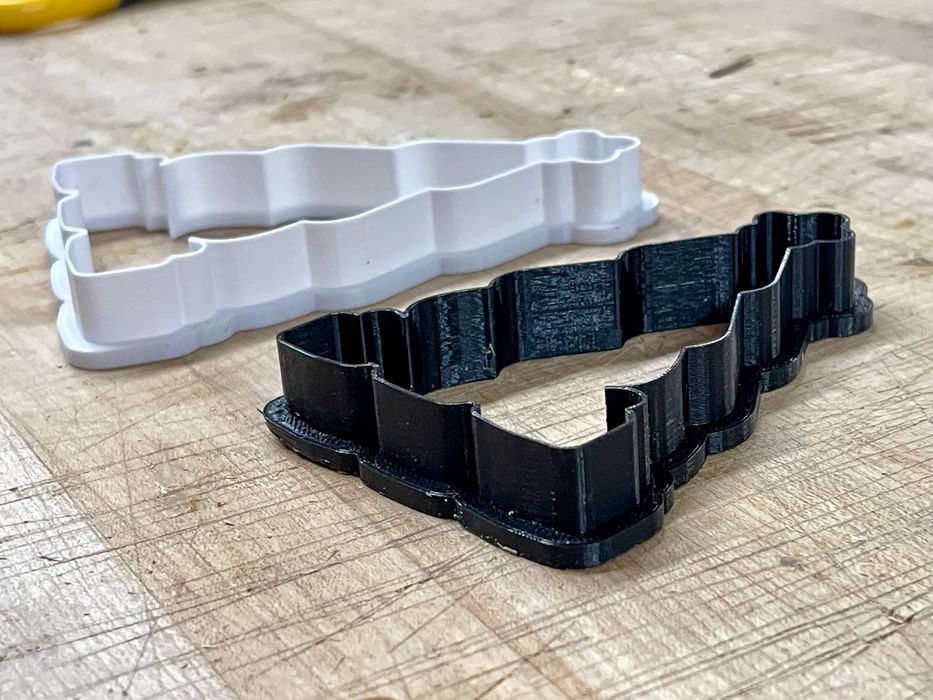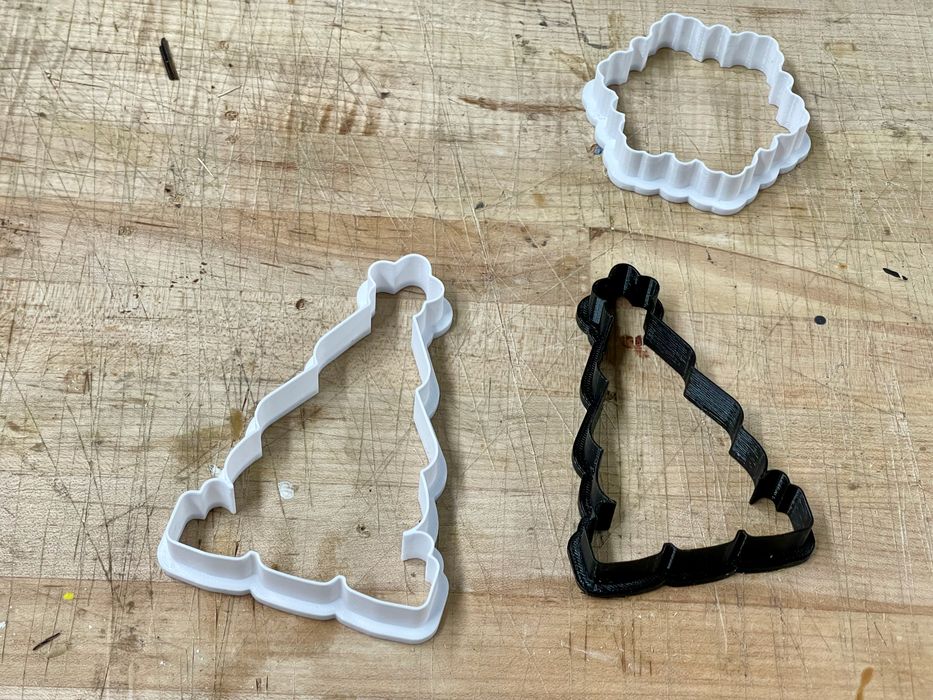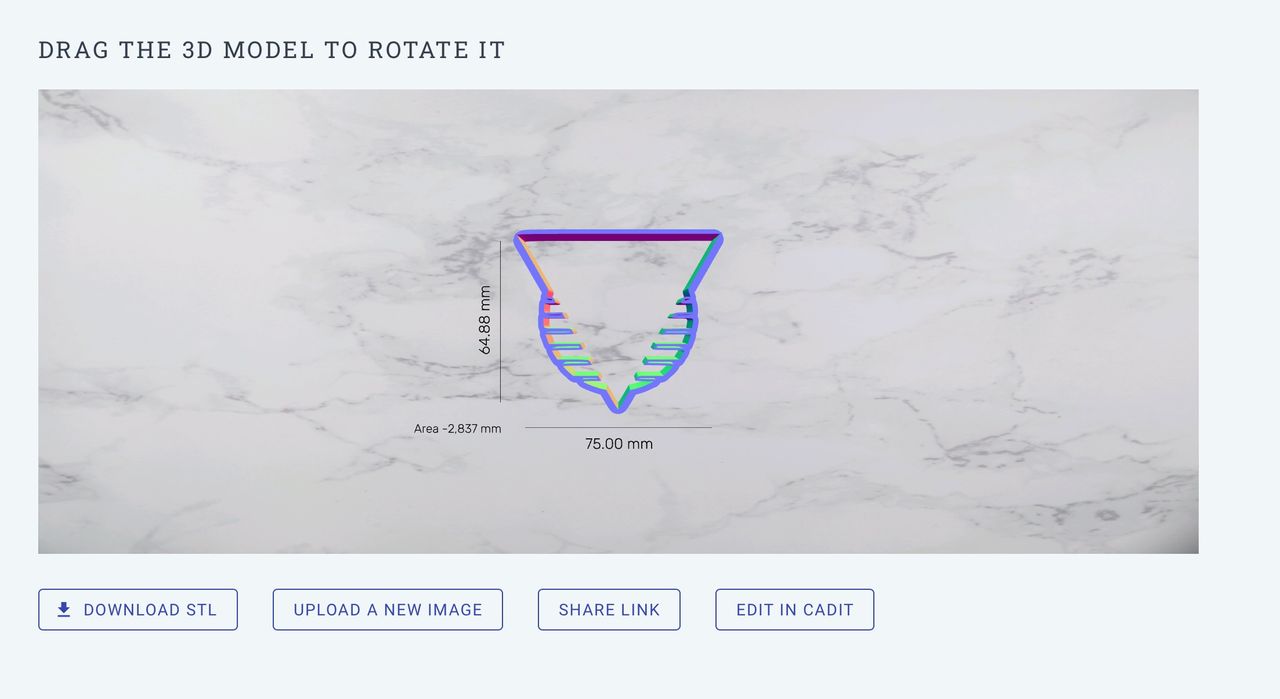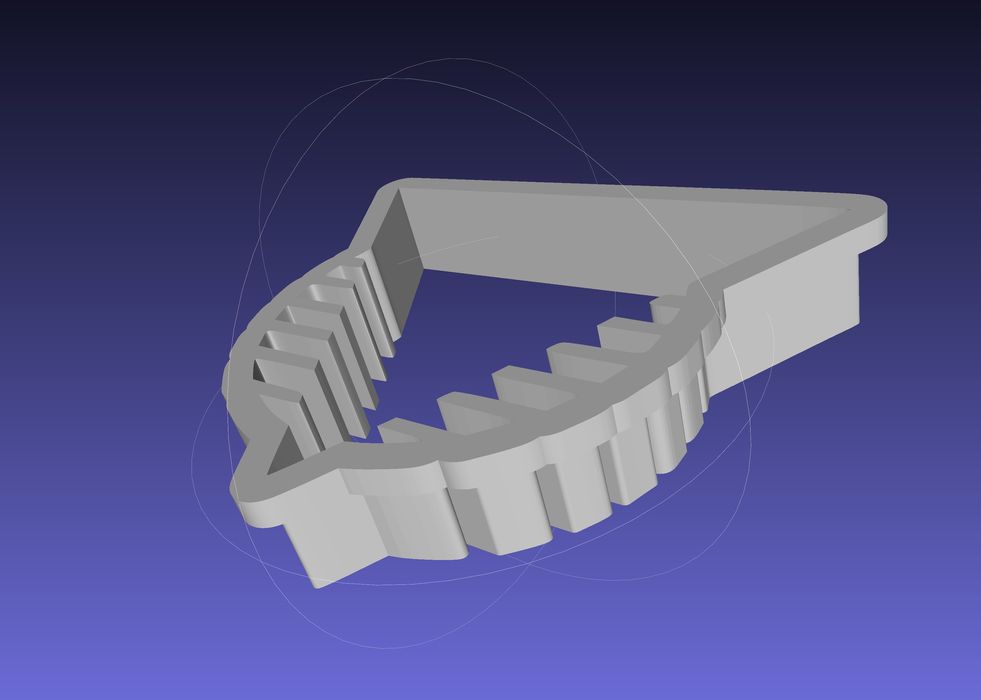
There’s an incredibly useful online 3D utility you need to know about: CookieCAD.
The problem being solved is the generation of a 3D model for cookie cutters. There are plenty of 3D model generators, but I hadn’t seen one dedicated to cookie cutters.
Making cookie cutters is actually quite a popular application for desktop 3D printers, and I’ve actually made several myself.
However, to make them requires a few steps. You first must obtain (or create) a 2D line drawing of the outline of the cookie shape. This is then imported into a 3D CAD program, where it can be thickened and extruded. Usually you’ll want to ensure one side is “sharp” so that it cuts into the dough properly.
That’s easy enough to do, but only if you have a CAD tool handy and the skills to take on those steps. Unfortunately, many desktop 3D printer owners don’t.

That’s where CookieCAD comes in. It provides an easy-to-use interface whereby anyone can very quickly create a 3D model for a cookie cutter design.
CookieCAD allows you to upload an image, and it will quickly “trace” the outline. For best results you should use a high-contrast image, like pure black and white.

Here you can see our Fabbaloo logo uploaded. I’m not sure this will make for good cookies, but you can see how it works.
You’re also able to specify a number of different parameters for generation of the 3D model, including size, blade characteristics, handle characteristics, and a few other aspects. This provides the user with basically full control over the cutter design.
Here is the wacky result of using our logo as the image for CookieCAD:

I think it could actually work.
Note, however, that there are some food safety concerns. Aside from the material printed being food safe, the layer gaps will also tend to collect food bits that could cause a problem in later use, and these would be very difficult to remove, even with washing. The best practice here would be to coat the cutter with a food safe epoxy, and that should make the cutter safe for use.
Note that to use CookieCAD, you will have to sign up for the service, but it is, at least for now, entirely free to use.
There is a “Premium” version that permits storage of models in the cloud, as well as some extra features. These features include:
- Two-piece stamp / cutters
- Private library
- Persistent settings
- Unusual extra generation parameters
- Automated multi-size generation
- STL storage
CookieCAD says they intend on adding offsets for use of text in the future, as well as sheet cutters. The Premium service is priced at US$150 per year, but they also have a “pay what you want” for unlimited use for two weeks if you have a project to complete.
CookieCAD is an excellent example of how 3D printing should be done: a tool that gives you exactly what you want without hassle.
It’s also an example of how 3D model repositories could be largely replaced with generative tools. With CookieCAD, there would be no need for cookie cutter 3D models on Thingiverse or Printables, right?
Via CookieCAD (Hat tip to Randy)
